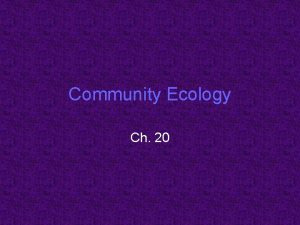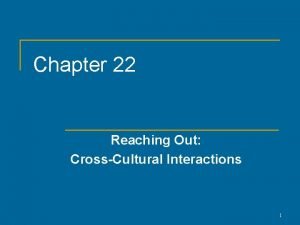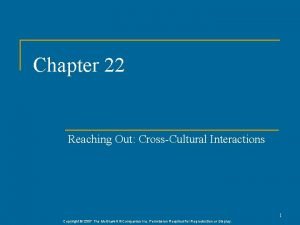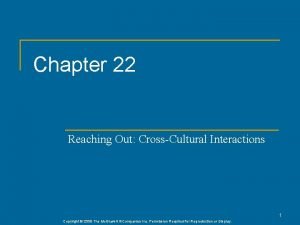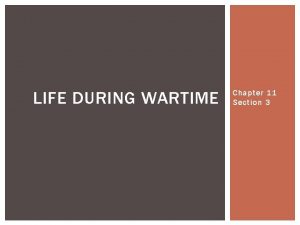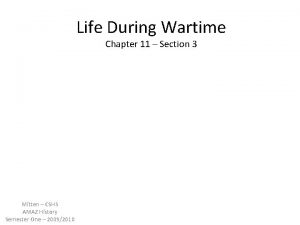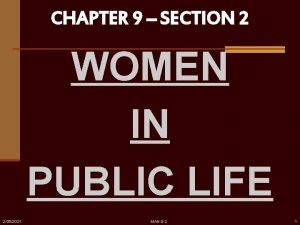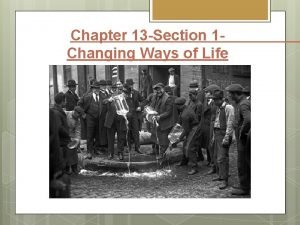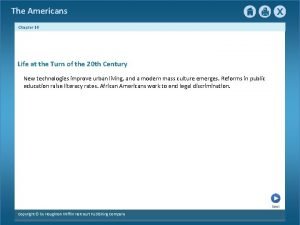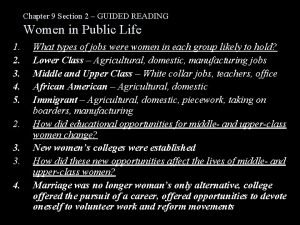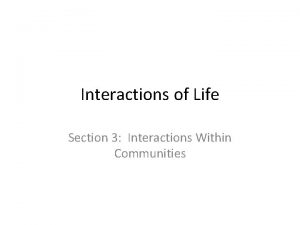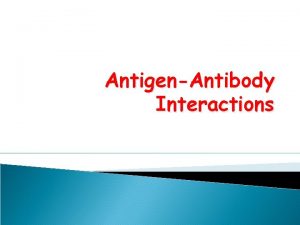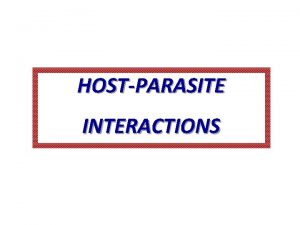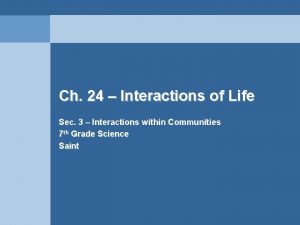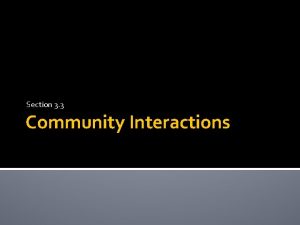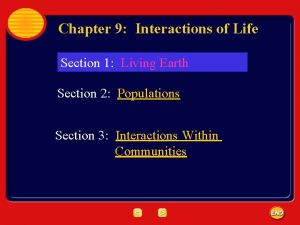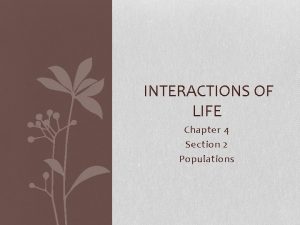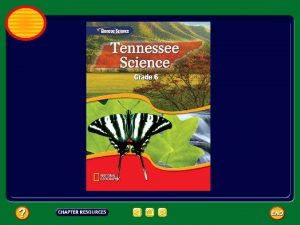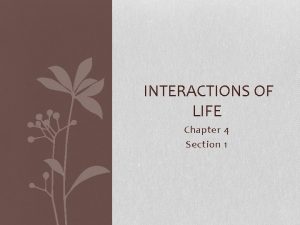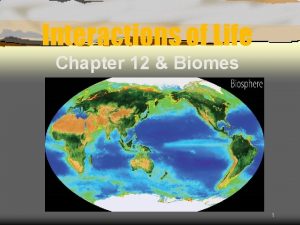INTERACTIONS OF LIFE Chapter 4 Section 3 Interactions













- Slides: 13

INTERACTIONS OF LIFE Chapter 4 Section 3 Interactions Within Communities

Obtaining Energy • The energy that fuels most life on earth comes from the Sun. • Plants make energy through photosynthesis. • Food energy is stored as different combinations of carbon hydrogen, and oxygen atoms. • During digestion, molecules are broken down, and energy is released.

– Producers • Producers are organisms that use an outside energy source like the Sun to make energy-rich molecules. • Chlorophyll is a chemical required for photosynthesis. • Some producers do not use the sun to make energy. • Inorganic molecules provide an energy source for chemosynthesis. (Volcanic vents on ocean floor)

– Consumers • Organisms that cannot make their own energyrich molecules are called consumers. • Obtain energy by eating other organisms. • Herbivores: vegetarians including rabbits and deer. • Carnivores: eat other animals or insects. Ex: frogs and spiders. • Omnivores: eat plants and animals. Ex: pigs • Decomposers: consume waste and dead material. Ex: fungi, bacteria, and earthworms.

– Food Chains • Model of feeding relationships in an ecosystem. • Example: Mountain lions eat deer, deer eat shrubs.

Symbiotic Relationships • Many organisms live together and share resources. • Any relationship between species is called symbiosis.

– Mutualism • A symbiotic relationship in which both species benefit. • Example: Alga and lichens.

– Commensalism • A symbiotic relationship in which one organism benefits and the other is not affected. • Example: Clown fish and sea anemones

– Parasitism • A symbiotic relationship in which one organism benefits but the other is harmed. • Example: roundworm in puppies.

Niches • • An organisms niche is its role in its environment How it obtains food and shelter, finds a mate, cares for its young, and avoids danger. • • Example: Organisms in a rotting log habitat Special adaptations improve survival are part of a niche. • Example: Monarch caterpillars/butterflies and milkweed plants.

– Predator and Prey • An organisms niche includes how it avoids being eaten by predators, and how it finds and captures prey. • Predators are consumers that capture and eat other consumers • Prey is the organisms that is captured and eaten. • Predators reduce population size and therefore reduce competition for resources among species.

– Cooperation • Organisms cooperate to improve survival. • Example: Deer alert the herd of predators. • Different individuals perform different tasks required for the survival of the group. • Example: Soldier ants protect worker ants. Worker ants feed larvae hatched by the Queen.

Section 3 Questions 1. Where does the energy that fuels life on earth come from? 2. Define producer, and give an example. 3. Define consumer, and give an example. 4. What is symbiosis? 5. Define mutualism, and give an example. 6. Define commensalism, and give an example. 7. Define parasitism, and give an example. 8. What is a niche? 9. How does the predator-prey relationship impact an ecosystem? 10. How does cooperation impact an environment? Give examples.
 Section 20-1 review species interactions
Section 20-1 review species interactions Chapter 22 reaching out cross-cultural interactions
Chapter 22 reaching out cross-cultural interactions Chapter 22 reaching out cross-cultural interactions
Chapter 22 reaching out cross-cultural interactions Chapter 22 reaching out cross-cultural interactions
Chapter 22 reaching out cross-cultural interactions 6.1 niches and community interactions answers
6.1 niches and community interactions answers Chapter 14 interactions in ecosystems
Chapter 14 interactions in ecosystems Chapter 10 section 1 meiosis answer key
Chapter 10 section 1 meiosis answer key Chapter 11 section 3 life during wartime
Chapter 11 section 3 life during wartime Chapter 11 section 3 guided reading life during wartime
Chapter 11 section 3 guided reading life during wartime Chapter 6 section 2 supply and demand in everyday life
Chapter 6 section 2 supply and demand in everyday life Chapter 17 section 2 women's in public life answer key
Chapter 17 section 2 women's in public life answer key Chapter 13 section 1 guided reading changing ways of life
Chapter 13 section 1 guided reading changing ways of life Chapter 16 section 1 science and urban life
Chapter 16 section 1 science and urban life Women in public life guided reading
Women in public life guided reading
